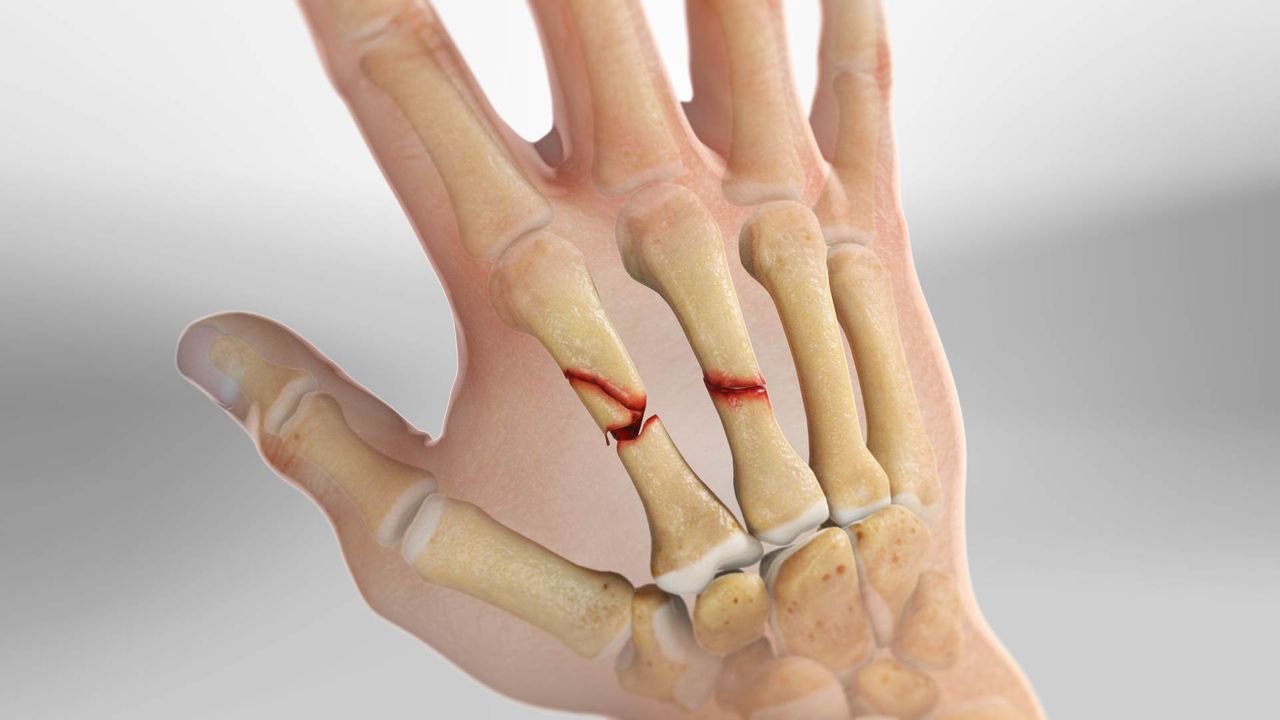
Over View
A hand fracture is a break in one of the bones in the hand. This includes:
- The small bones of the fingers (phalanges)
- The long bones within the palm (metacarpals)
A broken hand can be caused by a fall, crush injury, or twisting injury, or through direct contact in sports.
In many cases, a hand fracture will heal well with nonsurgical treatment. Depending on the type and location of the fracture, this may include wearing a cast, splint or buddy straps for a period of time.
Anatomy
The bones in your hand include
- Phalanges. These are the small bones that form the thumb and fingers. There are two phalanges in the thumb and three in each of the fingers.
- Metacarpals. These are the five bones located in the palm of the hand. The metacarpals connect the fingers to the hand and wrist.
The most common hand fracture is a fracture of the fifth metacarpal — the bone in the hand that supports the little finger. This is commonly called a “boxer’s fracture” and involves the "neck” of the bone, next to the knuckle joint. A boxer’s fracture is caused most often by punching or striking a hard object when your hand is closed in a fist. It can also be caused by a fall, motor vehicle accident, or other trauma.
Symptoms
Signs and symptoms of a hand fracture may include:
- Swelling
- Bruising
- Tenderness or pain
- Deformity
- Inability to move the finger
- Shortened finger
- The injured finger crossing over its neighbor (scissoring) when making a fist
In the case of a boxer’s fracture, the patient’s knuckle may look sunken in or depressed. This is caused by the displacement or angulation of the end, or “head,” of the metacarpal bone.